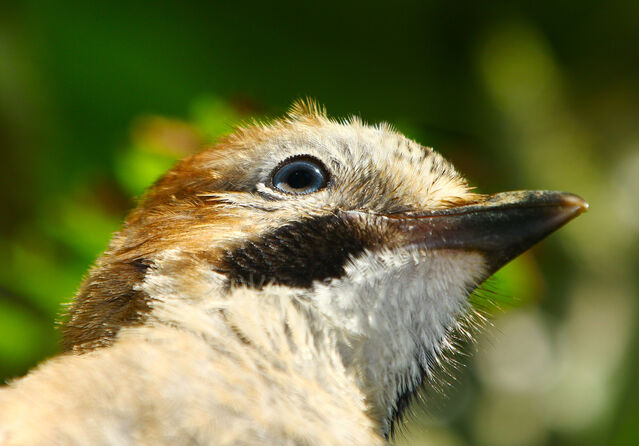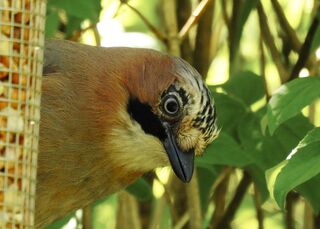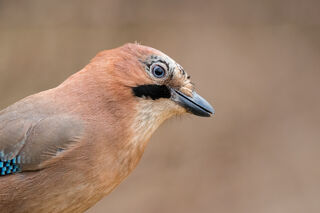Attention
What Magic Tricks Reveal About Animal Minds
Magic can be a tool to learn about attention and perception in other species.
Posted June 23, 2021 Reviewed by Chloe Williams
Key points
- Magic effects could provide a way to understand the similarities and differences in attention and perception between humans and other animals.
- In a recent study, researchers performed three different magic effects for a group of Eurasian jays and a sample of human volunteers.
- Jays were misled by effects that involve fast movement, but unlike humans, they were not deceived by effects that rely on hand maneuvers.

Elias Garcia-Pelegrin first learned to perform magic as an undergraduate student. Now, as part of his doctoral research at the University of Cambridge, he is putting his sleight-of-hand skills to use: To learn more about attention, perception, and cognition in other minds, Garcia-Pelegrin performs magic tricks for animals.
In recent years, psychologists and neuroscientists have begun to investigate how magic effects — tricks such as sleight-of-hand, illusion, and misdirection — exploit quirks of attention and perception in humans.
Garcia-Pelegrin’s advisors, Nicola Clayton and Clive Wilkins, were interested in how magic effects could be used as a methodological tool for exploring blind spots in perception and cognition. Like Garcia-Pelegrin, Wilkins has a background in performing magic. The three of them started wondering if magic effects could also be presented to animal audiences in order to reveal new insights into how different species perceive the world.
“We are beginning to understand why magic works on humans,” says Garcia-Pelegrin. “The study of magic effects in non-human animals could help us untangle if the attentional and perceptual mechanisms of other animals are like those of humans and if we can exploit them in the same way.”
An Avian Audience
In a new experiment, Garcia-Pelegrin, Clayton, Wilkins, and Alexandra Schnell tested the susceptibility to be misled by magic effects in a group of six Eurasian jays (Garrulus glandarius).
Jays, along with crows, ravens, and magpies, are members of the corvid family, large-brained birds that cache for a living — hiding food in different locations for later retrieval. However, these caches are vulnerable to theft from other birds. Jays and other corvids use intricate and elaborate cache protection strategies, comparable to the deceptive strategies used by magicians, to secure their caches from potential pilferers.
For instance, jays will protect their food caches from onlookers by discretely hiding food in one location while performing a series of bluff caching events (sticking their beaks in the ground but not depositing any food there), making it difficult for the observer to pinpoint the genuine location of the food. This is similar to the common magic technique of misdirection, in which a magician moves an object in a series of quick motions to make it harder for the spectator to track.
In addition, corvids can conceal items in their throat pouch while burying their beaks in the ground as if they were caching a food item.
“They are literally performing sleight-of-hand, or, rather, sleight-of-beak,” says Garcia-Pelegrin. “It is very similar to the magic technique of palming, but with bird anatomy.”
Since corvids already appear to be exploiting the attentional and perceptual constraints of their own kind, these birds may be susceptible to falling for magic effects performed by humans.

Laboratory Magic
Garcia-Pelegrin and colleagues performed three different magic effects for their sample of jays, all of which are typically used to mislead human spectators into thinking an object has been transferred from one hand to the other. For comparison, the researchers also tested the effectiveness of the same magic effects in a sample of human volunteers.
The first experiment tested the technique of palming, a fundamental part of the magician’s repertoire in which s/he holds an object with the muscles of the palm and mimes putting it in another place while keeping the object hidden in the hand. The results showed that while this technique fools humans, jays are not so easily misled by palming.
The jays appear to use a strategy based on what is observable: If they see the object (a tasty worm) move from one hand to the other, they will pick the hand that contains the worm. But if they do not specifically see the worm move, no matter what the magician mimes doing with his hands, they always go for the hand where they last saw the worm.
“This magic effect works in humans because we have inherent expectations about how hand movements and mechanics work,” says Garcia-Pelegrin. “Palming capitalizes on those expectations. But why would a bird have those same inherent expectations about appendages that they lack?”
The jays performed similarly in the second experiment, testing the French drop technique. This technique also tends to work in humans because of their expectations surrounding hand mechanics. Again, if the birds did not see the worm actively change from one hand to another, no matter how much the magician emphasized that he was dropping it, they chose the hand where they saw the worm last.
Interestingly, the experimental jays had vast experience with human hands. Six years ago, they were hatched in the lab, and hand-reared and trained by the experimenters. Garcia-Pelegrin says the fact that even jays with extensive experience with humans do not make the same assumptions about hand movements as people do might indicate that these expectations are not gained through experience but are inherent to humans.

The third experiment used the fast pass, a technique that relies on the quick motions of the magician’s hands. In the fast pass, the magician transfers an object from one hand to the other but does it so quickly that spectators miss the movement. Jays, like humans, were deceived by the fast pass technique.
Garcia-Pelegrin says the success of the fast pass in misleading jays could be due to birds’ unique visual systems. While humans have forward-facing eyes, birds’ eyes are on the sides of their heads. Birds can choose to turn their heads to look at something with just one eye (using monocular vision) or look at it straight on with both eyes (using binocular vision). If, during the magic trick, the birds are switching between monocular and binocular vision, the key movement of the worm from one hand to the other could fall within a perceptual blind spot. If the jays lose track of the worm this way and then use their strategy of choosing the hand where they last saw it, they will choose the empty hand.
Magic as a Research Tool
Overall, the results indicated that, similar to humans, Eurasian jays are susceptible to magic effects that use fast movements to fool the viewer. However, unlike humans, jays do not appear to be misled by magic effects that rely on the observer’s intrinsic expectations about hand movements.
Garcia-Pelegrin says this study raises many questions. “A next step would be to investigate what is going on visually from the bird’s point of view,” he says. “And there is more to learn about the birds’ understanding of human hand motions, maybe by comparing wild jays to hand-raised jays.”
Looking beyond jays, Garcia-Pelegrin says it will be important to test magic effects in other species, especially primates. Since we share similar visual systems and dexterous hands, studies of other primates could shed light on where and when our own perceptual and cognitive blind spots emerged evolutionarily.
Finally, Garcia-Pelegrin hopes that researchers in other fields will use magic effects as a tool to investigate animal minds. Neuroscience experiments, in particular, could be a useful complement to behavioral studies like this one, able to answer some of the questions these studies raise.
“I don’t think behavioral testing of magic alone will tell us why the animal is operating the way it does,” says Garcia-Pelegrin. “The way I see it, magic is more of a way to generate more questions.”
References
Garcia-Pelegrin E, Schnell AK, Wilkins C, and Clayton NS. (2021). Exploring the perceptual inabilities of Eurasian jays (Garrulus glandarius) using magic effects. PNAS 118(24): e2026106118. Doi: 10.1073/pnas.2026106118.




